1966 Dime Coin Value: How Much Is It Worth?
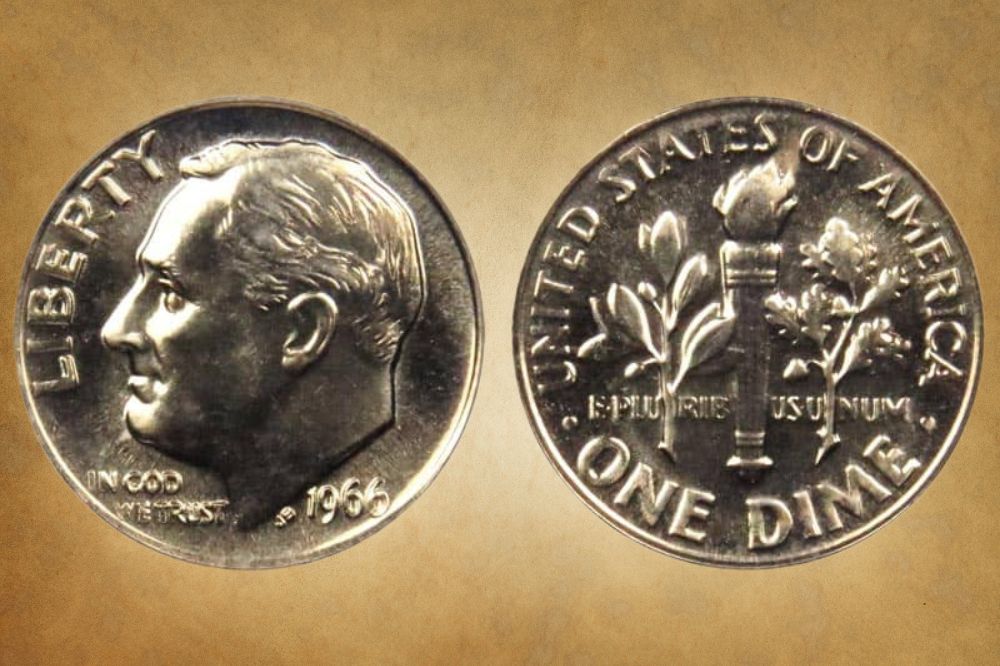
Did you spot the 1966 dime and were excited about owning a rare coin?
Well, the 1966 dime is an interesting coin that excites many collectors. It was designed to commemorate a popular United States president and was issued during a severe coin shortage and when the Mint discontinued the use of mintmarks.
Rare 1966 errors can be worth a lot of money, so it is definitely a good idea to pay attention to this coin. Read on to discover the 1966 dime value, its fascinating history, physical design, and high-value errors that increase the coin’s value.
Let’s get started!
1966 Dime Value Chart |
||||
| Mint Mark | Good | Fine | Extremely Fine | Uncirculated |
| 1966 No Mint Mark Dime Value | $0.15 | $0.15 | $0.15 | $200 |
| 1966 Special Mint Set Value | – | – | – | $245 |
1966 Dime Value Guide
Next, we’ll explore the 1966 dime value of the two varieties produced this year. These include:
- The 1966 No-Mintmark Dime
- The 1966 Special Mint Set Dime
The 1966 No-Mint Mark Dime Value
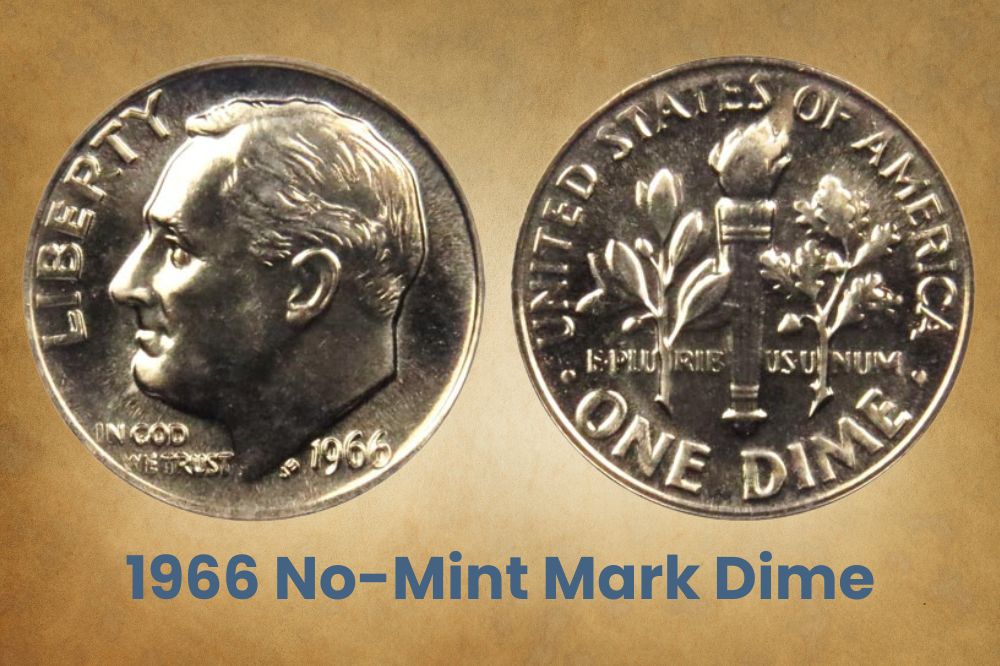
The Mint produced more than one billion Roosevelt dimes in 1966, 1.3 billion to be precise, between the Philadelphia, Denver, and San Francisco mints.
Because the U.S. Mint ceased the use of mintmarks from 1966 to 1967, all 1966 dimes released into circulation fall under the category of no-mint mark, regardless of whether they were produced at the San Francisco or Denver mint.
Because they were produced in large quantities, the Roosevelt dime of 1966 is extremely common, and you can easily find it in your pocket change. Coins in mint state (MS) 64 and MS65 exist, with a few thousand available.
In MS66, the 1966 dime is much harder to find, and anything above this grade is extremely rare, with fewer than a dozen known examples.
The extremely high mintage lowers the 1966 dime value; too many of these coins are in circulation to make them worth anything more than their face value.
In circulated condition, the value of the 1966 Roosevelt dime is $0.15 and $0.35. The coin may sell for up to $200 in pristine uncirculated
condition.
According to the Professional Coin Grading Service (PCGS), the most valuable 1966 dime was graded MS-68 and was auctioned for $2,375 in 2021.
1966 Special Mint Set Dime Value
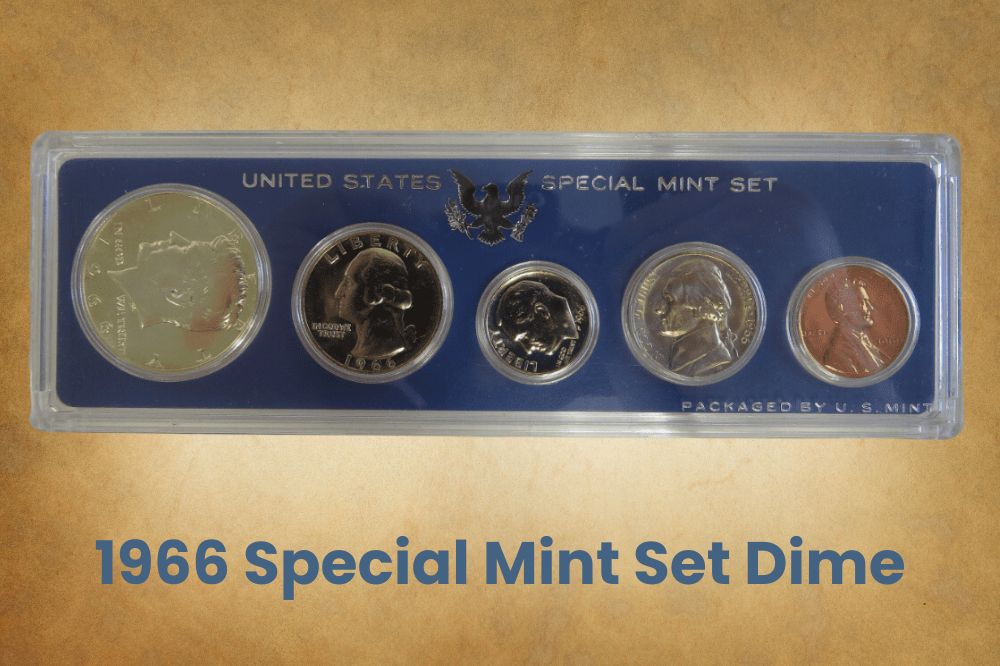
Because of the coin shortage and the rising prices of silver metal, the Mint did not strike a proof set in 1966. Instead, it produced a Special Mint Set.
There is a small but important difference between a proof and a mint set. Although special mint sets have a brilliant mirror-like finish, proof sets are made using higher tonnage dies to intensify the coin’s details.
Proof sets do not require special treatment before striking, but multiple strikes are applied on proof coins. Proofs typically do not have mintmarks.
The 1966 Special Mint Set included the Roosevelt dime, Lincoln cent, Kennedy half dollar, Jefferson Nickel, and the Washington quarter. Although this Mint Set was struck in San Francisco, it does not feature the S mintmark as with the 1966 dimes.
The Mint produced a record-breaking 2.2 million Special Mint Set dimes in 1966. Because of the large number of Mint Set 1966 dimes, the value of these coins is lower than you might expect of Mint Set coins.
At MS60, a 1966 Special Mint Set dime is worth $1 and only $20, even at a higher grade of MS67. Special Mint Set dimes at grade MS68 or higher are extremely rare, and the few available have an estimated value of $245 at MS69.
According to the PCGS, the most valuable Special Mint Set 1966 dime sold at $12,500 at SP67 in 2021.
Related Posts: 16 Most Valuable Dime Errors
1966 Dime Errors
The 1966 dime, in average condition, is worth only slightly more than its face value. Even in mint state, these coins will earn you nothing more than $200.
The high mintage and the fact that the coin does not contain silver content depresses the 1966 dime value. Even if you were to buy or sell the coin for its metal content, its melt value would be at or below the face value.
If you are interested in the Roosevelt dimes, it’s best to pay attention to error coins. Dimes from 1966 with significant errors can be worth a lot of money, especially if the coin is in Brilliant Uncirculated Condition.
Below I list the 1966 dime error coins you should look out for in your pocket change:
The 1966 Dime Off-Center Strike Error
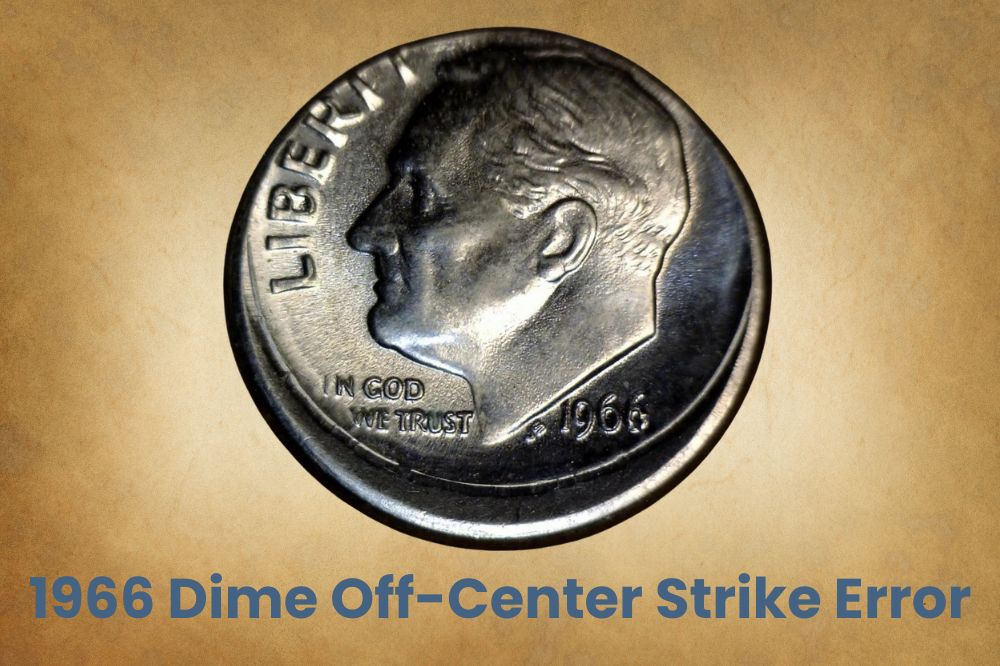
An off-center strike happens when the black planchet is not properly positioned between the upper and lower dies. The uneven positioning leads to the coin only being struck partially, so part of the design is missing.
Off-center strike errors are quite common, but they are also among the most visible, i.e. it only takes a little scrutiny to notice the design on the coin is off or partially missing.
The 1966 off-center strike dime errors are worth between $10 and $20.
The 1966 Dime Clipped Planchet Error
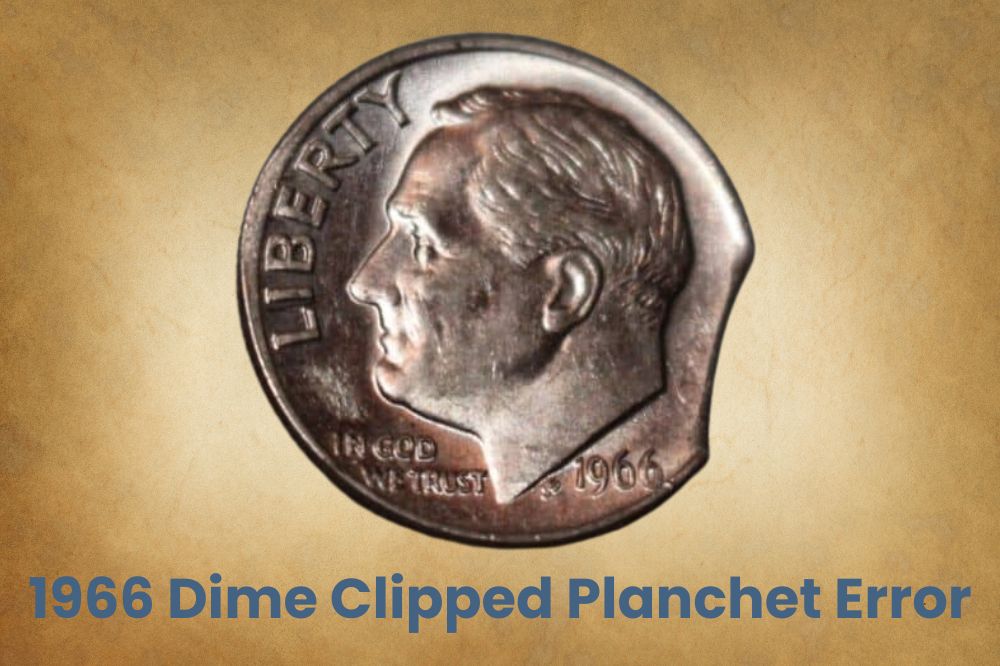
Clipped planchet error coins look like a small part has been broken off the coin’s edge.
This error happens when the coin is incorrectly fed into the planchet-cutting machine, resulting in the machine cutting into the edge of the coin.
The most valuable clipped planchet Roosevelt 1966 dimes are elliptical. These may fetch up to $30 in the open market.
The 1966 Dime Missing Clad Error
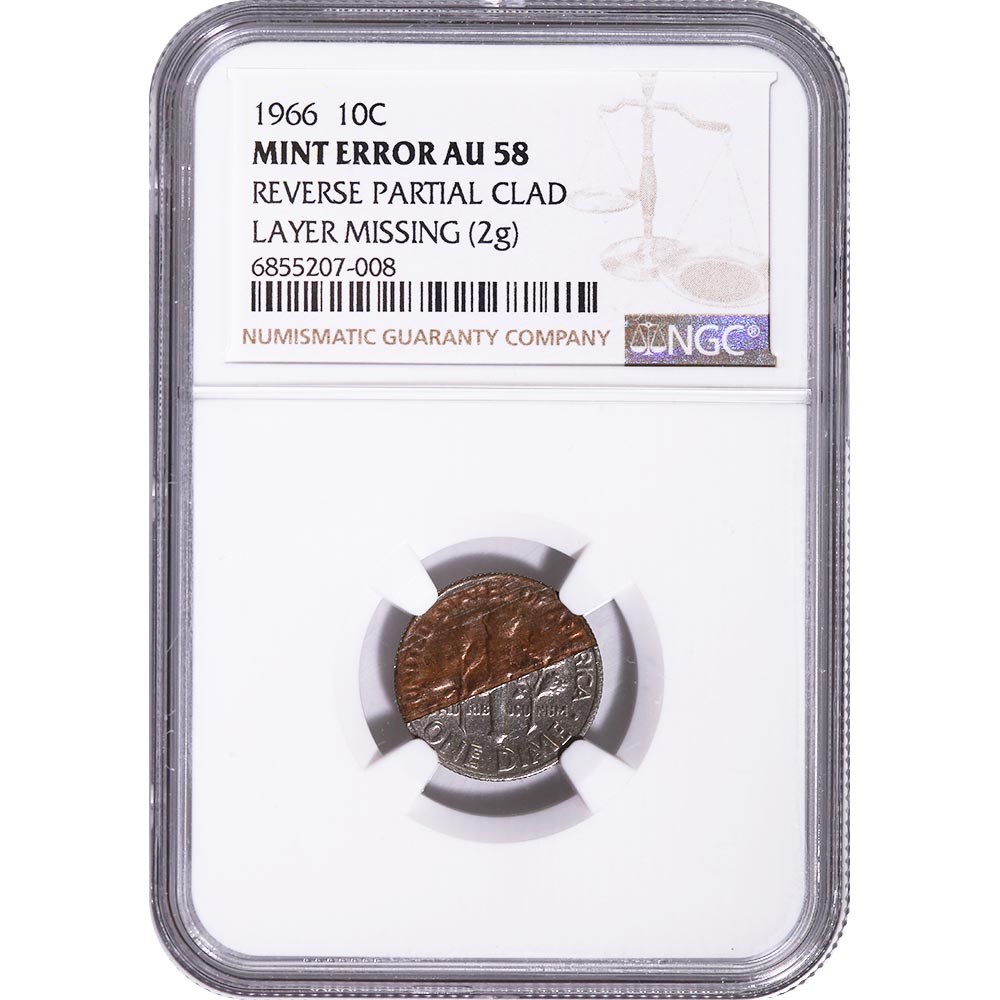
The missing clad error is extremely rare but still happens. This error occurs when one of the clad or metal layers that cover the coin is missing.
The 1966 dime is a clad coin sandwiched between a copper core and an outer copper-nickel alloy. The alloy covers the front and back of the coin and may sometimes be missing in some coins.
A missing clad error causes the dime to weigh less than its actual weight or appear thinner where the clad is missing. The coin may also have a brown or brass orange colour in parts missing the clad.
Numismatic services value the 1966 missing clad error at around $600.
The 1966 Dime Doubled Die Error
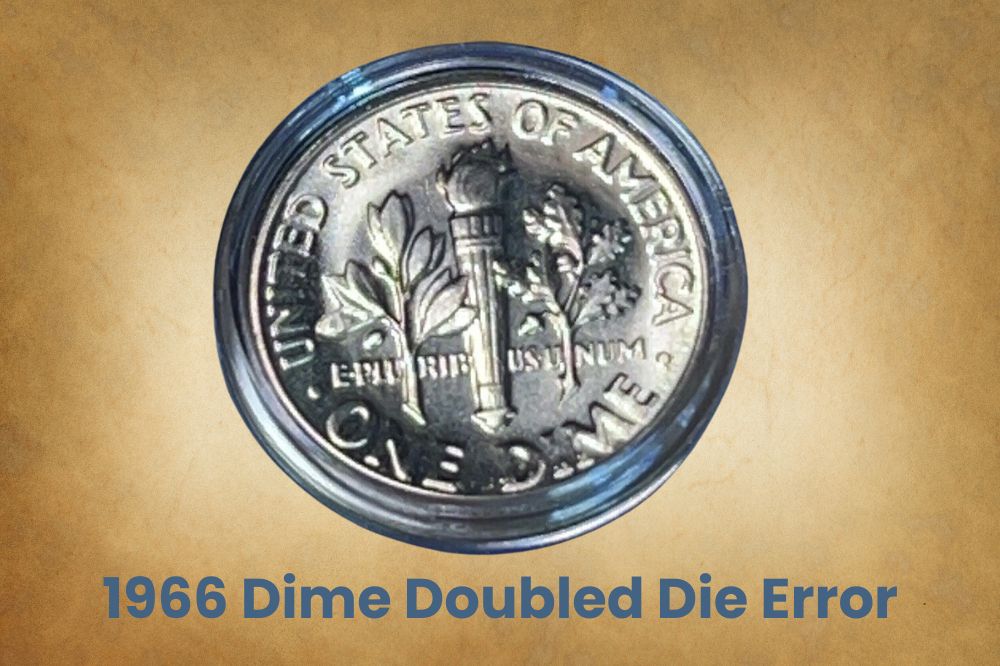
The doubled die error is the most common and valuable of all coin errors.
This error happens when the coin press duplicates an image on the same side of the coin, so the final design looks like it was printed twice, one on top of the other but slightly offset.
In some 1966 dimes, the word LIBERTY appears as though it was printed twice on itself.
The more visible the doubled die error, the more valuable the coin is. The 1966 Roosevelt dimes with a doubled die error can fetch between $4,000 and $125,000 at the auction.
The 1966 Dime Missing Letters
As the name suggests, the missing letters error occurs when some letters are not visible on the coin’s design.
The missing letters are among the most common in 1966 dimes, with some coins missing the letters ‘I’ and ‘W’ in the motto IN GOD WE TRUST. Other 1966 dimes miss the letter Y in the word LIBERTY.
A 1966 dime missing letters error coin is valued at $50 to $100 in the open market.
The 1966 Dime Misplaced Die
Some 1966 Roosevelt dimes feature a visible misplaced die error. This error occurs when the planchets are incorrectly placed between the upper and lower dies used to imprint the obverse and reverse designs of the coin.
A notable error is when the number ‘5’ appears on the president’s cheek. For the dime error to be worth anything, the ‘5’ should be clearly and easily visible. Such a dime can be worth more than $2,000 at the auction.
Related Posts: 22 Most Valuable Roosevelt Dimes Worth Money
History of the 1966 Dime
The United States Treasury issued the 1966 dime to commemorate President Franklin De Roosevelt and, in particular, his immense efforts toward finding a cure for polio.
Roosevelt passed away in April, and Congress requested that the Mercury dime, which had already been in circulation for 30 years, be replaced with a coin commemorating the late president with a portrait of him on the coin.
Hendry Morgenthau Jr., the Treasury Secretary at the time, commissioned Chief Engraver John R. Sinnock to design the new coin. The Commission Of Fine Art objected to Sinnock’s original design for the 10-cent coin, claiming that the Roosevelt bust did not honour the president and his legacy as deserved.
Sinnock attempted many iterations for the coin, including the San Francisco War Memorial Opera House, the Four Freedoms scrolls, the Liberty goddess, and even a hand holding a torch. But after much back and forth, the Commission and legislators approved the coin’s final design.
Coin striking began on January 19, 1946, and the currency was released into circulation on January 30, coinciding with the president’s birthday and the March of Dimes event.
Sinnock signed the coin with his initials J.S., but this too was met with intense criticism, with some saying that the initials were code for Joseph Stalin, an indication that Sinnock was a supporter of the communist regime in the USSR.
The Roosevelt dimes produced from 1946 to 1964 contained 90% silver and 10% copper. A severe coin shortage began in 1965, and the price of silver metal shot up, prompting Congress to pass the Coinage Act. The new law banned using silver in minting coins and called instead for copper and nickel.
1966 marked the second year of copper-nickel-clad coins, which replaced silver coins. Also, between 1966 and 1967, the coins did not have mint marks including those made in San Francisco and Denver. The United States Mint hoped that removing mintmarks would deter collectors from hoarding coins with mintmarks, which they believed held a higher value. The tradition of including mintmarks on coins resumed in 1968 and remains intact.
More than 1.3 billion 1966 dimes were produced, and over 2 million special mint sets were made, giving the 1966 Roosevelt one of the highest mintages of its time.
Related Posts: 18 Most Valuable Mercury Dimes Worth Money
How to identify 1966 Dime?
Let’s now dive into the physical attributes of the 1966 Roosevelt dime.
The Obverse of the 1966 Dime
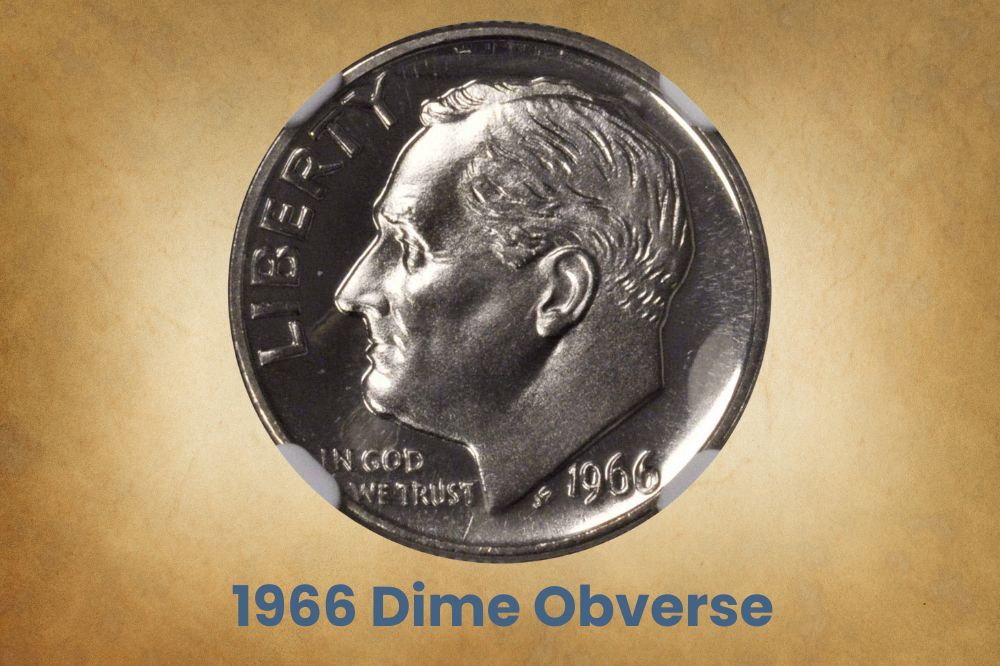
The obverse is the upside of a coin, also known as the heads. The obverse of the 1966 dime features the left-facing bust of President Roosevelt.
His eyes, looking into the distance, and a hint of a smile symbolize renewed hope and great accomplishments.
The word LIBERTY is inscribed around the coin’s left edge.
The motto IN GOD WE TRUST appears on the left side of the bust’s truncation, while the coin’s production year, 1966, appears on the right side just underneath the truncation.
Next to the production year are the engraver’s initials, J.S.
The Reverse of the 1966 Dime
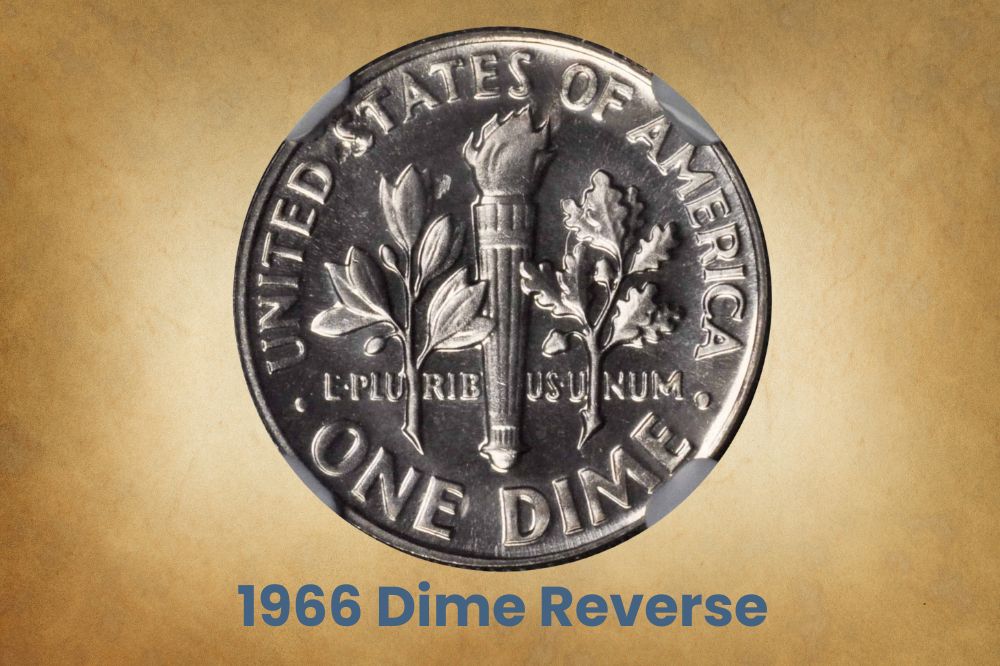
The reverse is the back side of a coin, also known as tails. There is a vertical torch with an olive branch on one side and an oak branch on the other on the reverse of the 1966 Roosevelt dime.
Around the top of the coin are the words UNITED STATES OF AMERICA.
The motto, E PLURIBUS UNUM, is imprinted horizontally across the coin toward the bottom of the torch.
The coin’s denomination, ONE DIME, is engraved around the bottom in slightly larger font size. Two dots separate the wording at the top and bottom of the coin.
Other Features of the 1966 Dime
The Roosevelt dime of 1966 comprises 91.67% copper and 8.33% nickel and is therefore known as a copper-nickel clad.
The coin weighs 2.27 grams with a diameter of 17.9mm. It has a reeded edge and no mintmark.
It is important to familiarize yourself with the history and unique features of a 1966 Roosevelt dime. This information will help you determine if collecting this coin is worthwhile.
Related Posts: 17 Most Valuable Dimes Worth Money
FAQ
Here are a few questions collectors commonly ask.
How much is one dime?
As authorized by the Coinage Act of 1792, a single dime is equal to 1/10 of a dollar or ten cents/pennies. There are no signs that the U.S. Mint plans to change the value of one dime, which has been part of the U.S. currency for more than 200 years.
What makes a 1966 dime rare?
More than a billion 1966 dimes were minted, and most were released into circulation, making this coin extremely common. A 1966 dime is not rare; finding these coins in your pocket change is quite easy. That said, 1966 dimes in mint condition are rare. Look for a coin with a brilliant, mirror-like surface with no marks or damage. Other rare 1966 dimes are those with errors, such as the doubled die.
Is a 1966 dime made out of silver?
The 1966 dimes are not made of silver. These coins are composed of copper and a copper-nickel outer layer. Starting in 1964, the Mint halted the production of silver coins, and from then onwards, coins, including the 1966 dime, were made using copper and nickel.
